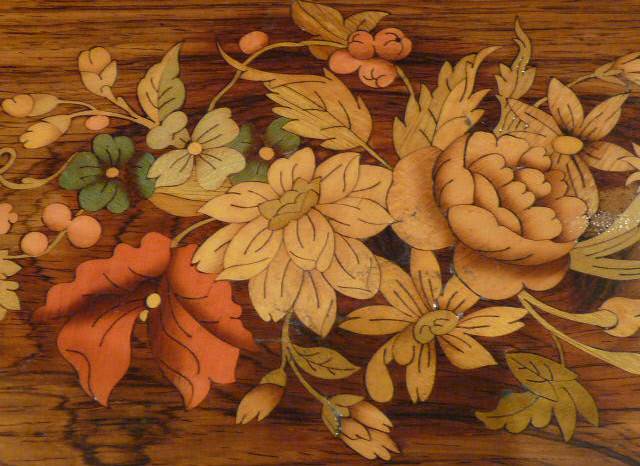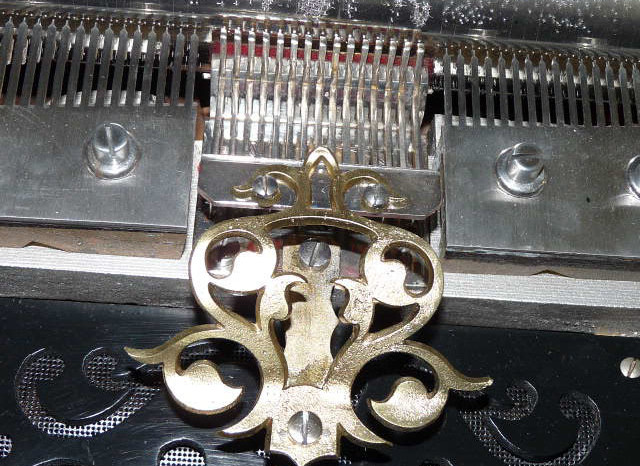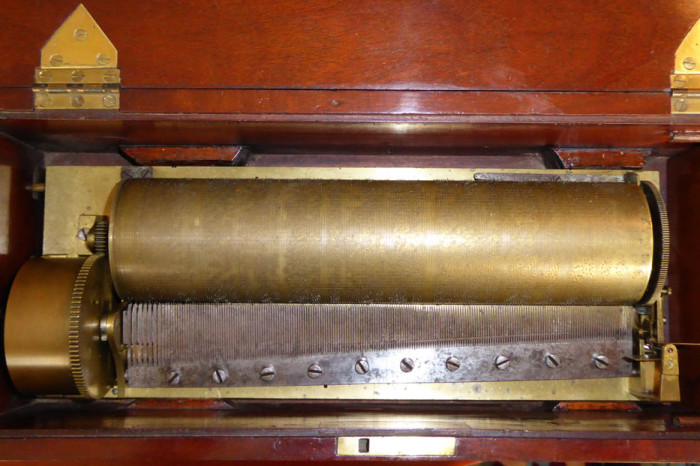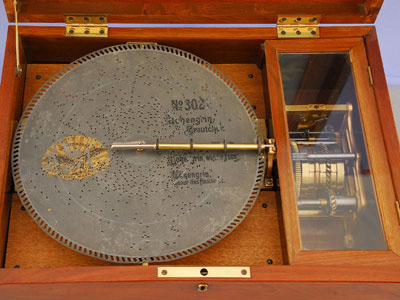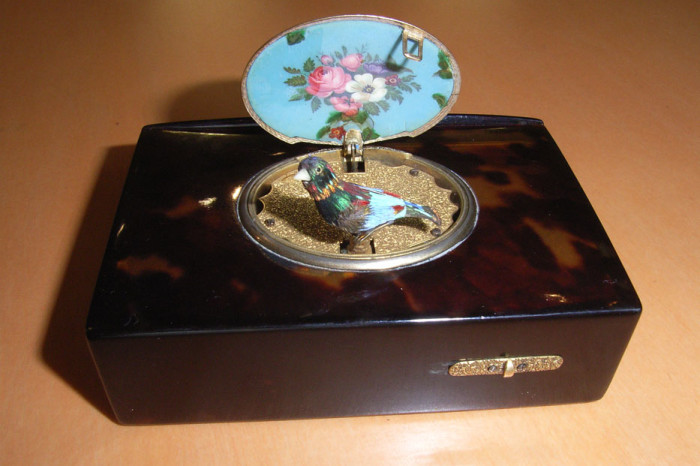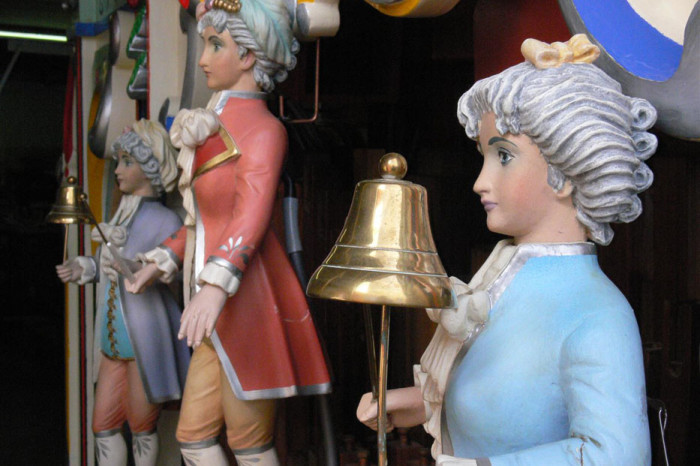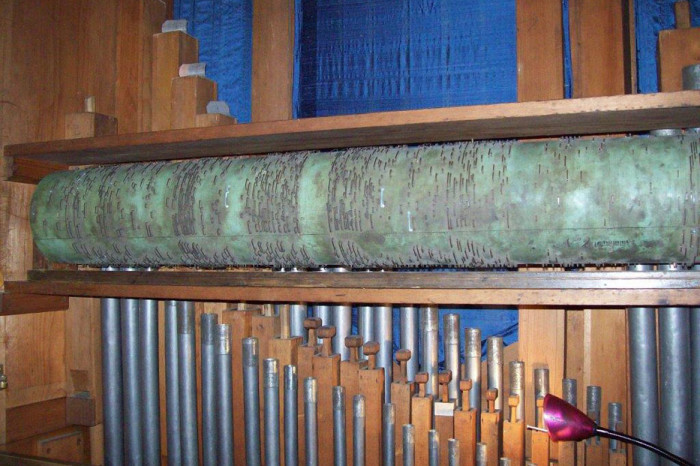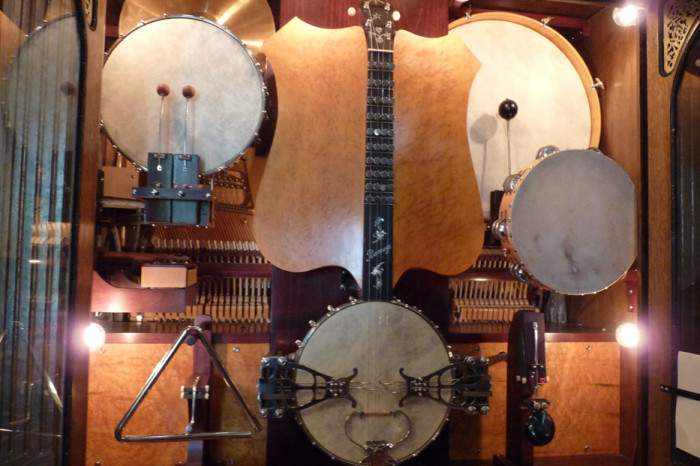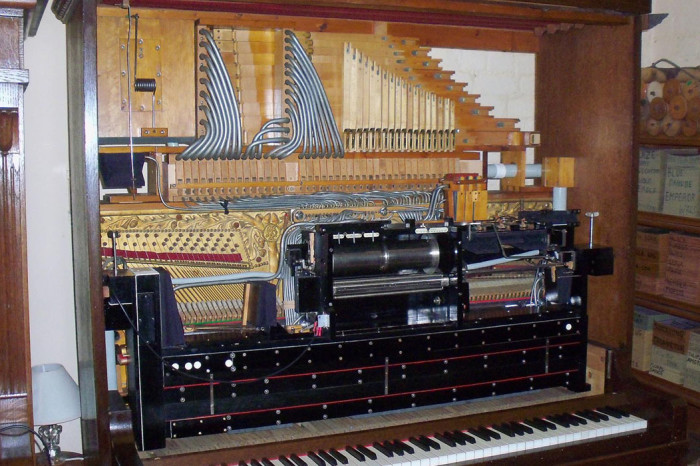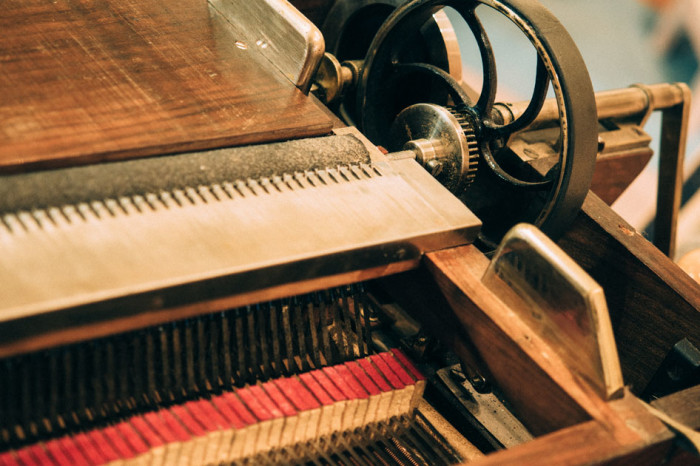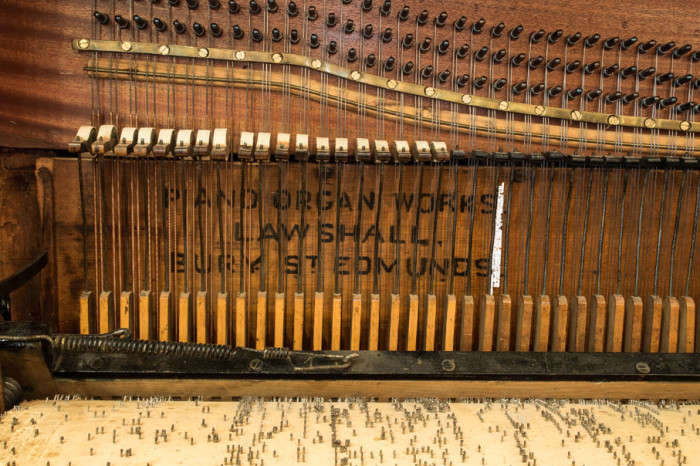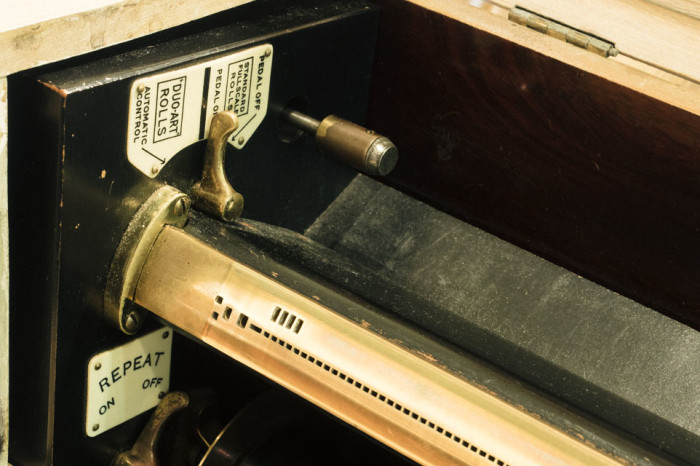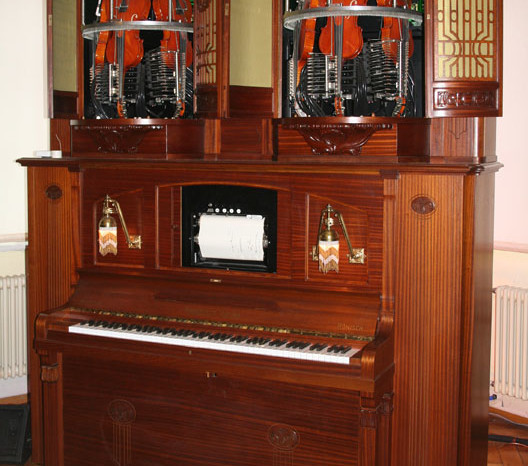Mechanical music
Mechanical music
Mechanical music is produced by self-playing, or automatic musical instruments; these may be versions of pianos or organs, or unique instruments such as musical boxes or organettes. In all cases, rather than being selected by the fingers of a human hand, musical notes are determined mechanically by a programme either pinned on wooden barrels or metal cylinders, or punched on discs or strips of metal, card or paper.
Mechanical music has existed for hundreds of years, but reached its zenith during the nineteenth century when it was the main domestic entertainment - for those who could afford it. Nowadays, its appeal lies in the finely engineered mechanical music instruments, the craftsmanship of their cases, and the distinctive sound of their music.
Musical Boxes
The year 1796 is often taken as the start point when talking about the history of musical boxes. This is the date of a patent taken out by an Antoine Favre of Geneva, for a musical watch which played tuned steel teeth. Like most things, mechanised musical movements are the result of evolution, and scholars will debate both the definition of a musical movement or musical box, as well as their first manifestation. Michel Joseph Rasonet of Nancy, France, invented a time piece with sounding teeth in the 1770s, and John Rich of London is known to have made ‘objets d’art around the same time, many incorporating some form of musical mechanism.
Over a short period of time, clocks, watches and other small luxury items containing some means of producing musical notes were made by watchmakers, until by the 1820s tuned steel teeth were set into wooden cases, to be plucked by a revolving pinned metal cylinder, making what we today would recognise as a musical box. The main centres of production were Geneva and Ste Croix. Dozens of manufacturers were involved, many of them inter-related. Well-known makers include members of the Nicole family, Paillard, Ami Rivenc, Mermod, Ducommun-Girod, Cuendet, Langdorff and Lecoultre.
The teeth in the earliest boxes were screwed individually to a base plate, then in two’s, until finally a single comb of several teeth was produced by cutting slits into a piece of steel. The cylinder was powered by a clock-motor; this was wound first by a key, then around 1850 a lever-wind version was introduced. The small, early, musical boxes are often referred to as “snuff boxes”, although very few show any evidence of having contained snuff. The term is still used for small hand-held boxes. Listen
The era of the cylinder musical box closely parallels the nineteenth century. During the latter half ever more elaborate versions appeared, with more tunes per box, often with special effects such a ‘forte-piano’, or ‘sublime-harmonie’ or ‘mandolin’, or a combination of these, and added embellishments such as bells, drums, castanets, and even small reed and pipe organs. Case designs became more elaborate. Towards the end of the century boxes were made with cylinders which could be removed and changed, to increase their repertoire of music. Listen
The desire for more flexibility in the choice of music led to the development in 1887 of a musical box whose programme consisted not of a cylinder, but a removal disc. However, the technological breakthrough really came in 1889 with the invention of the star wheel. Each note was produced by a steel tooth, now plucked by a star wheel, which was turned, in most cases, by a projection on a metal disc. The era of the disc musical box was approximately the two decades from 1890 – 1910. Whereas Switzerland was the main producer of cylinder boxes, Germany and then the United States were the main producers of disc musical boxes. The main producers were Symphonion and Polyphon of Leipzig, and Regina of Rahway, New Jersey. Listen
Musical movements based on the cylinder box principle are still being made today by the Reuge company of Switzerland, and a small number of manufacturers in the Far East.
Visitors to our site might like to see this film about the history of musical boxes entitled
"The Victorian Music Machine - A History of the Musical Box"
https://www.churchwardantiques.com/the-victorian-music-machine
Singing birds.
Although not exactly ‘musical,’ singing birds are often included in the mechanical music gamut. The singing bird mechanism was developed from the slide whistle, a single whistle with a movable plunger, again towards the end of the eighteenth century. Clockwork driven, it uses a series of cams which control the air to the whistle, the position of the plunger, and the various movements of the bird. The miniaturised bird automaton and mechanism were normally housed in highly decorated silver or gold enamelled cases. Larger singing birds, often life-size, were housed in cages, some containing more than one bird.
Modern versions of both types are still made in Switzerland.
Organs and organettes
There are many different types of self-playing organ. By and large these would have been manually powered by turning a handle, although some were weight –driven.
The earliest ‘automatic’ pipe organs were programmed by means of barrels, with metal pins and wire bridges. Arguably the smallest is the ‘serinette,’ used in eighteenth-century homes to teach caged birds to sing. The origin of this instrument is France. Intermediate-sized instruments were used in the home and/or the street whilst larger barrel organs were to be found in big private residences and public places.
A later form of programme was the punched card, which was easier to handle and store, and afforded a wider choice of music. The largest version would be the fair organ, originating in the last quarter of the nineteenth century in Waldkirch in the Black Forest region of Germany, and still in production in the early twentieth century. Several firms located in France, Belgium, Germany and the Netherlands manufactured relatively large organs using this system towards the end of the nineteenth and into the twentieth century, for use in dance halls, or street entertainment. Another development was the pneumatic action which allowed the use of punched paper rolls for the music programme. Listen
Reed organs, as opposed to pipe organs, were also automated and around 1880 the Organette appeared. This was a small hand turned and, usually, portable instrument for home entertainment. They used a variety of programme media such as paper roll, card or metal disc and the pinned solid ‘cob,’ in many respects a miniaturized version of a barrel organ. Listen
Orchestrions
‘Orchestrion’ is a term used to describe an instrument which could be considered as a substitute orchestra. The first Orchestrions were a development of the barrel organ with added instrumentation such as drums, cymbals, castanets, xylophones, and so on. The introduction of the pneumatic action led to more complex instruments. Piano Orchestrions were similar instruments but based around the piano rather than the organ. These were almost exclusively pneumatically operated. For use in public entertainment, they were produced in great numbers during the later nineteenth century in Freiburg and Leipzig in Germany, up till the First World War, and also in the United States, where it was not so much the War as the introduction of the Prohibition era which stifled the industry. Many were coin operated and became very popular in America before prohibition, hence the term ‘Nickelodeon,’ based on the colloquial word ‘nickel’ for a five cent coin. Listen
Pianos
Pianos were adapted to be operated by a programme which automatically selected the notes to be played. Different means of programming them were used.
In 1850 an Italian, Giovanni Racca, invented a system for playing a piano by means of perforated card. The instrument, known as a Piano Melodico produces a tremolo effect while playing. Listen
Barrel pianos used a pinned barrel similar to those used in organs. Made in the late nineteenth and early twentieth centuries, these instruments, sometimes incorrectly called a ‘hurdy gurdy’, were wheeled around the streets, or placed in cafes and bars.
Player pianos were developed after the invention of pneumatic action, which enabled a compact automatic playing mechanism to be incorporated into a normal piano. However, the first widely available device in America and Britain was the Piano Player or ‘push-up’. This was a unit which pushed up to a conventional piano which it would play using 65 or 88 wooden fingers driven by a foot operated pump and controlled by paper rolls. The brand name ‘Pianola’ quickly became used as a generic word to describe these. We often hear it used today to refer to any automatic piano, regardless of type. Player pianos (rather than ‘piano players’!)with built in mechanisms soon followed and in the early twentieth century were developed into the ‘Reproducing’ piano which was able to play with varying expression as if the original pianist were playing. Reproducing rolls would be recorded by popular pianists of the day whose signature would appear on the rolls.
Violin and piano combinations
A special form of piano orchestrion was the piano with violin. In Germany this took the form of large upright piano with an additional section mounted on top containing up to three real violins played by a circular bow. In America a smaller instrument was developed with a cabinet piano (no keyboard) and one or two horizontal violins played by a series of rotating discs. Both types were controlled by paper roll, the German version being pneumatic and the Americans using electrical solenoids. Listen
An unusual variation of the violin orchestrion is the Weber Unika which very closely imitates violins using specially tone pipes. Listen
Click here to see more videos











